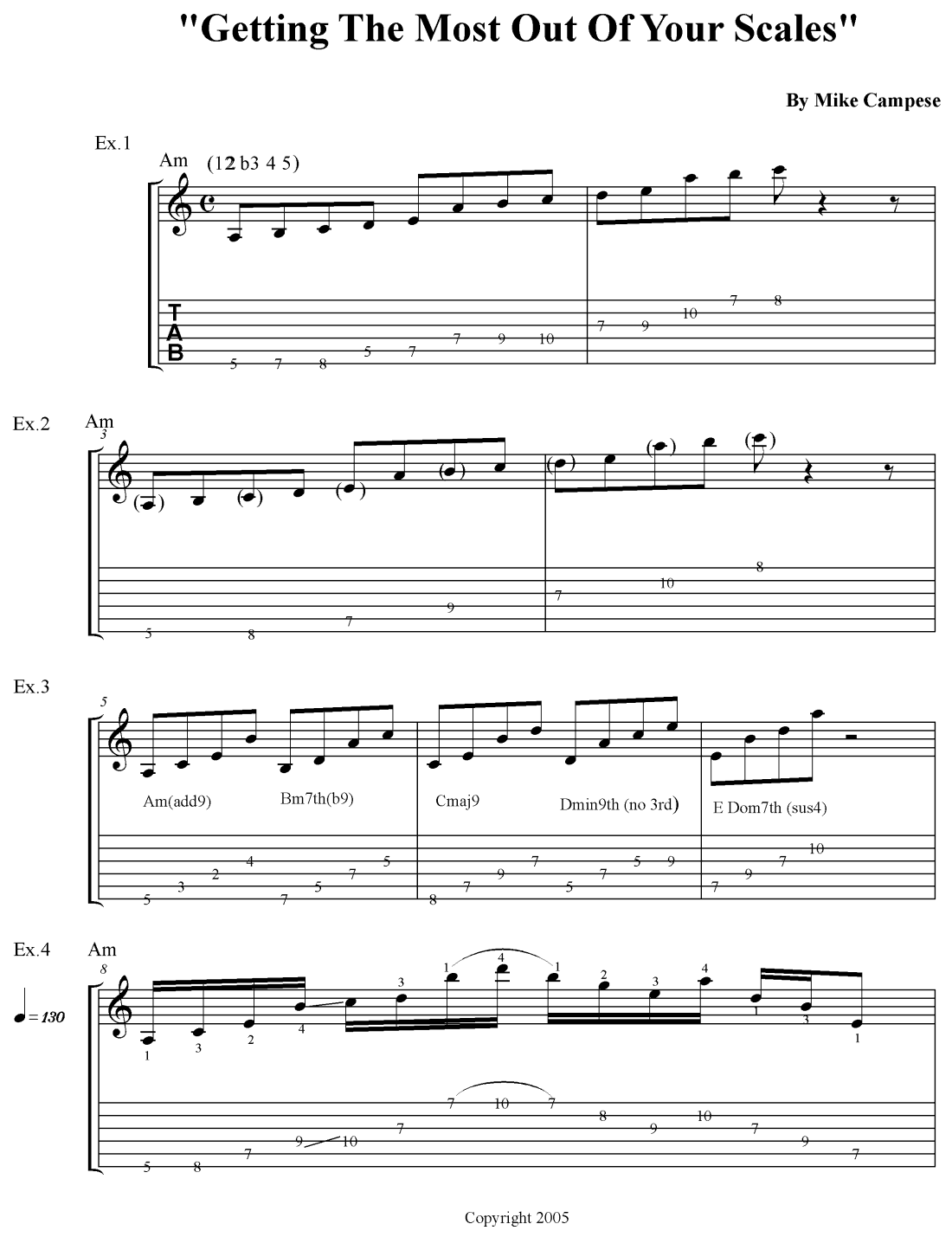Welcome back everyone! In this lesson I will be showing you how to get the most out of your scales. Most people think you have to use a lot of scales to get different sounds. You can get many unique sounds just out of one scale. I mean, you should know all the main scales and their uses, but if you take the scale you are using for a certain musical situation, you can break it up into smaller groups to get different sounds, like with 4 or 5 notes for example. Many exotic scales are derived from other scales like the Harmonic minor for instance. For this lesson we will be using the A minor scale (A, B, C, D, E, F, G). Let's get started.
Example 1 is the first 5 notes from the A minor scale (1, 2, b3, 4, 5), and the notes are (A, B, C, D, E) played in 2 octaves. The next few examples that I will show you will be based out of this scale. Just by playing these 5 notes only you will create a unique sounding scale.
MP3 - Example 1

In Example 2 we will be using the scale we created but we will be just playing every other note (A, C, E, B, D). Basically this is an A minor 11th arpeggio. Try this with other 5 note scales.
MP3 - Example 2
Example 3 is a group of arpeggios from the scale we created. These are constructed off each note of the scale, stacking every other note. This is the same technique used to construct chords and arpeggios from 7 note scales. We are building a whole Harmonic system around this scale. Try playing the notes together in a chordal fashion and apply it to a song you are composing.
MP3 - Example 3
Example 4 Is a lick i constructed from the 1st, 3rd and 6th arpeggio from the same scale. It has an A minor 11th tonality. Try playing this over a rock groove in A - and be sure to make up licks like this one and apply it to a musical situation.
MP3 - Example 4
Example 5 is a line also from this scale, using octave displacement. Basically, i just put together the arpeggios we came up with and moved certain notes up a octave. You can get a really interesting sound by experimenting with this. Make sure you follow the fingerings supplied.
MP3 - Example 5

Example 6 Is a 5 note scale also created from the A minor scale. I just picked a different set of 5 notes, the 2nd, b3rd, 4th, b6th and the b7th. You will notice an exotic flavor to this one. Apply the techniques we used for the other set of notes to this scale. Do you see what we are doing here? We are taking one scale and creating different sounds from it. You can pick any group of notes you want out of the scale you are using and it will sound different, I promise you.
MP3 - Example 6
If you have any questions, feel free to email me. Be sure to check out my CDs on this amazing site and check out my new CD release, "The New". Also visit mikecampese.com for more information.
Mike Campese is an all-around music performer, session artist and teacher competent in many musical styles, electric and acoustic. He has studied at G.I.T. (Honors Graduate), and with Paul Gilbert, Norman Brown, Stanley Jordan, Scott Henderson and Keith Wyatt.